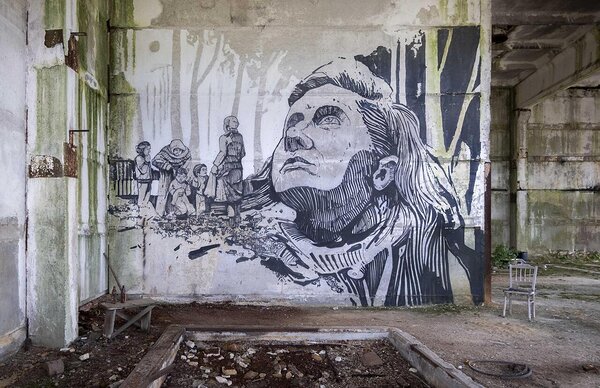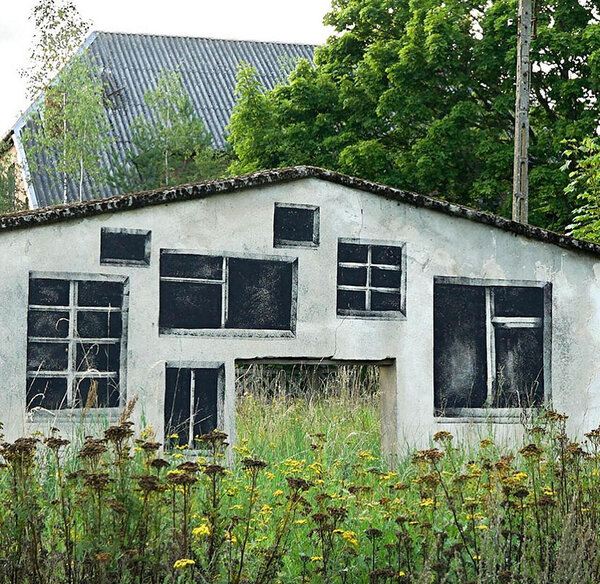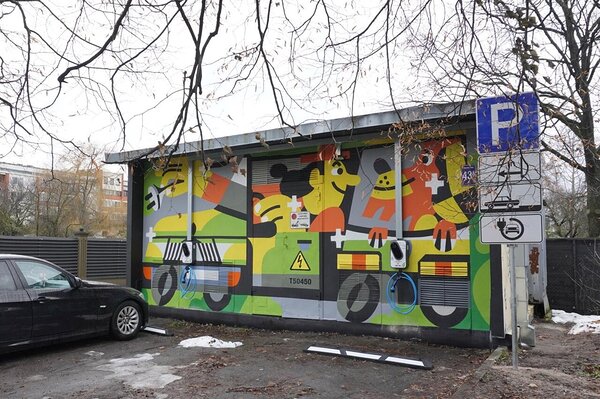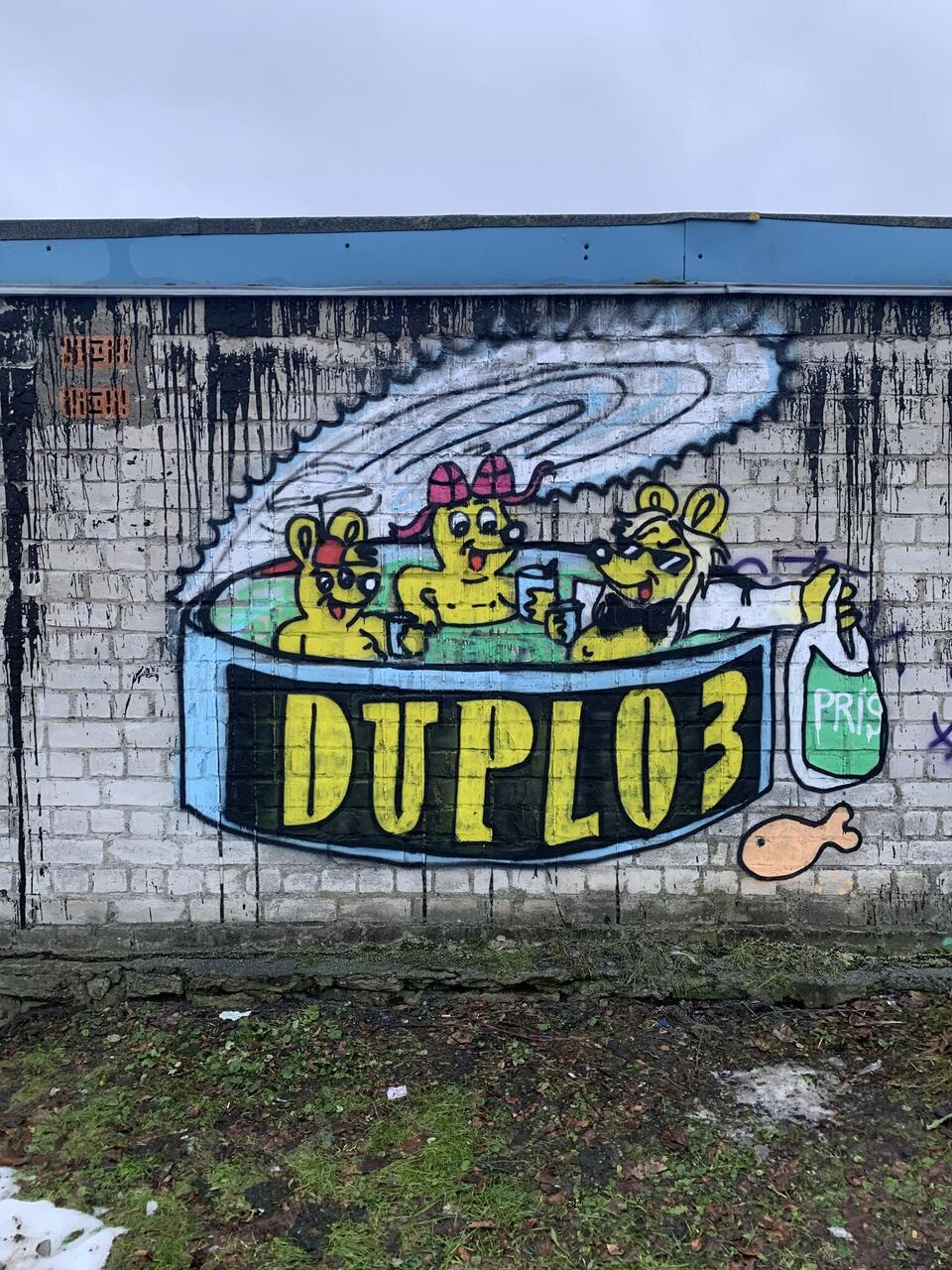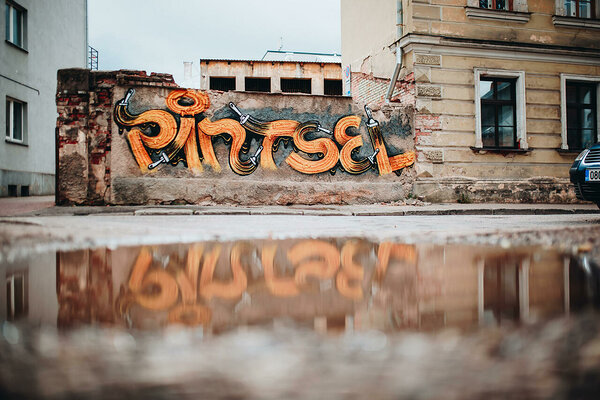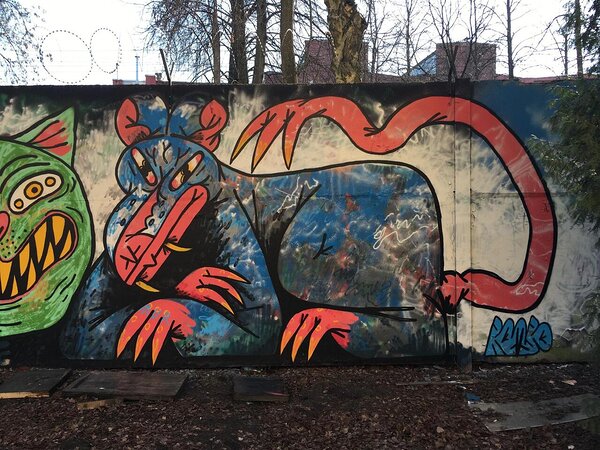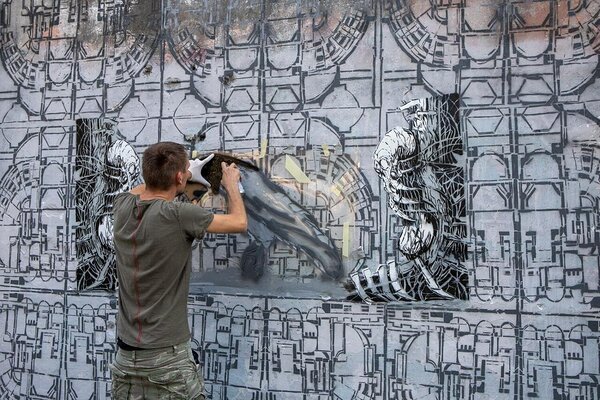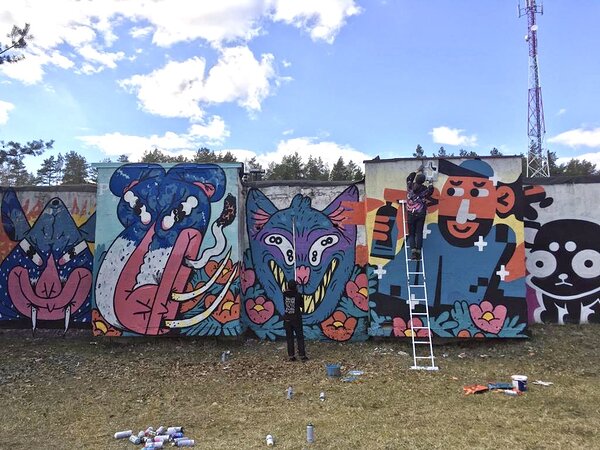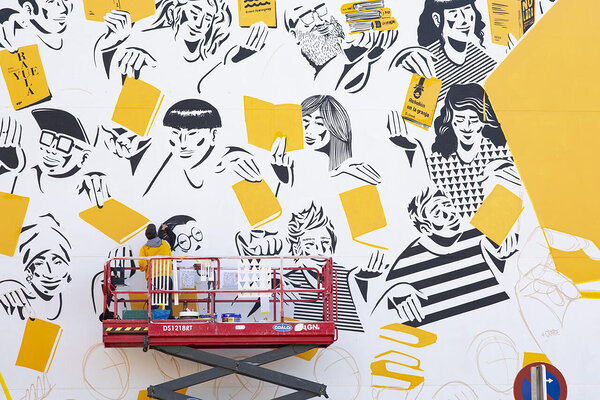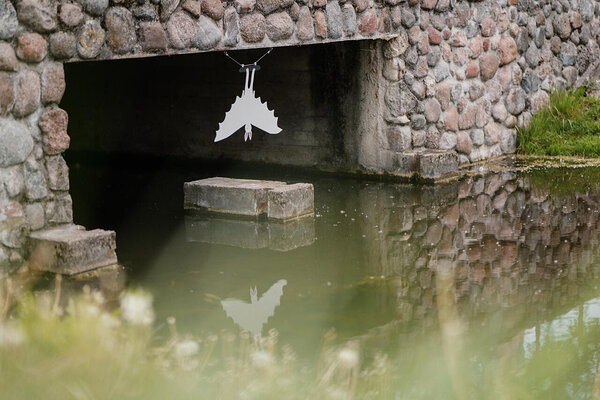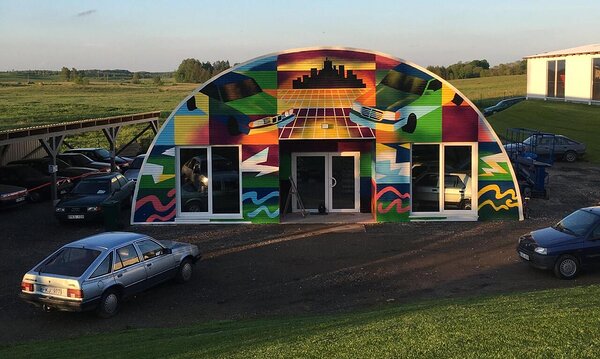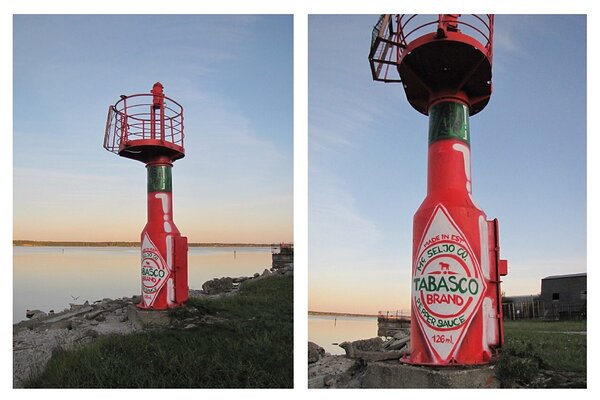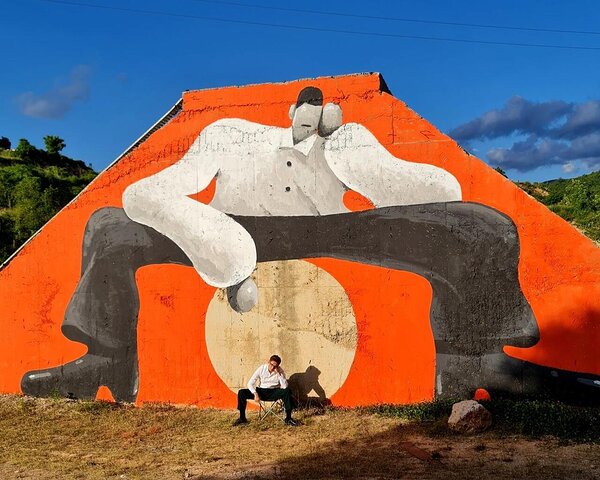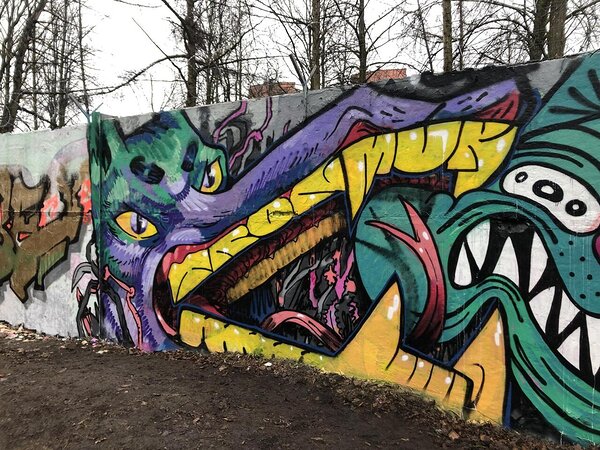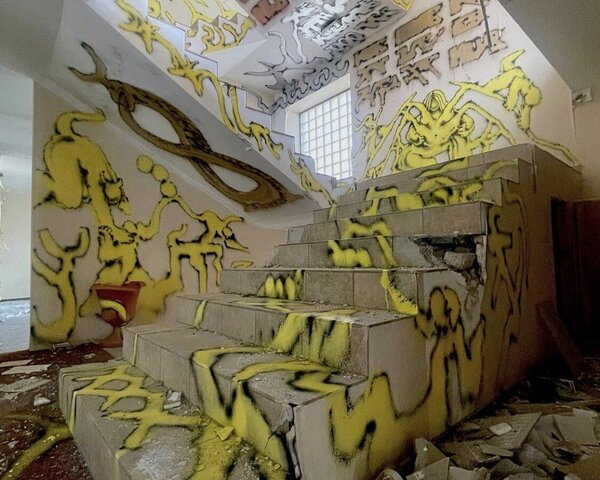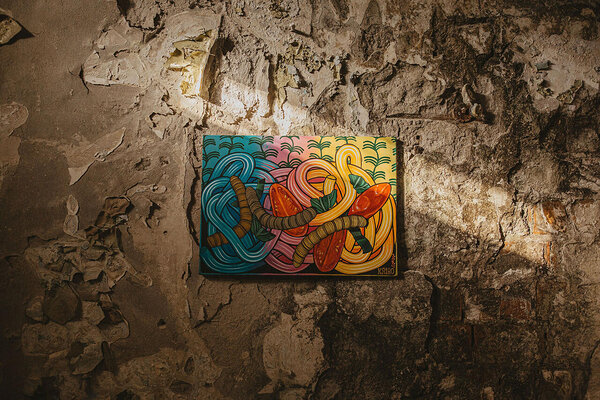Artists
SEPE
Born in 1982 in Warsaw, Poland, Michał ‘SEPE’ Wręga has been immersed in the graffiti and street art scene since 1996. Currently based in Warsaw, he works as a freelance graphic designer, painter, and illustrator. With a background rooted in the traditional graffiti movement and influenced by book illustration and graphic design, Sepe is continuously evolving his unique artistic language across paper, canvas, and walls. Sepe has said that he enjoys most of all drawing in abandoned houses.
Jay Pop
Jacek Wielebski is a designer and street artist from Gdynia. He works with public spaces, street typography, graphic design, signage, and murals. From 2009 to 2024, he served as a curator and head designer at Traffic Design Association. As a muralist and urban artist, he explores the city and industrial areas, using his art to comment on social and political issues in Poland and Europe with black humour and irony. Despite often appearing bitter and highly critical, he believes in humanity and strives to look optimistically into the future.
Zahars Ze
Zahars Ze is an artist and designer who is interested in visual and creative fields began with cutting and spraying stencils on the streets of his hometown. After moving to Riga, his passion for street art and illustration continued to grow, opening new horizons.
A graduate of the Art Academy of Latvia. This forms the foundation for his diverse artworks, which include printmaking, painting, ceramics, and woodwork. His illustrations often feature a cast of characters, drawn from everyday life and sometimes capturing naive moments. His visual language is consistently positive, bridging the gap between art and design.
Nowadays he is interested in using ceramic tiles in his street art practice.
DUPLO3
DUPLO3 is a collaborative artist duo currently based in Tallinn, Estonia, specializing in contemporary art across various mediums such as sculpture, installation, performance, painting, and street art. Their artistic vision revolves around cultivating a personal visual language, exploring stereotypes, personal narratives, gender, and consumerist culture with an ironic twist. Utilizing pop-culture icons set within domestic contexts, they intricately weave an interplay between architecture and the surrounding environment.
Pintsel
Pintsel, hailing from Tallinn, began with traditional text-based graffiti around 20 years ago. He now focuses on creating narrative, site-specific works using the symbol of the paintbrush. Pintsel is inspired by the ever-changing urban environment—the synergy, architecture, and people have always been central to his life and art.ROMBO
ROMBO first emerged from a bright beam of spray paint. He's a feral street cat, embodying both your nightmares and possibly your dreams. ROMBO hunts and seeks his prey not only at night but also during afternoon power naps. His only limitation is the edge of the wall. ROMBO has been spraying walls with his scent for over 15 years and has contributed prints and illustrations to various publications. Despite his menacing nature, ROMBO doesn't prey on innocent beings; instead, he uses them as MAX RELAX fuel.
Kobayashi
With over 15 years in the street art scene, he's recognized for his distinct style of hand-cut stencils, which are based on his own sketches. His works feature black, gray, and white tones, drawing viewers into his distinctive world of humanoid beings in dark and industrial settings. Kobayashi stands out as one of the top creators in the stencil art scene.
Ziepe
Ziepe is a hardcore nature lover and avid bicycle rider. She enjoys drawing quirky animal characters, using ancient printmaking techniques, spray painting walls, and sticking stickers in various places.
NSN997
NSN997 is an Italian street artist based in Madrid. The name NSN comes from his graffiti crew Newpolitan Street Artivism, which was founded in Naples in 1997. His latest works, under the theme "Positive Pattern," convey optimistic messages about a different, better society. NSN997's art can be found across Spain, Italy, Portugal, Greece, Belgium, Germany, Romania, and Switzerland.
Akvilė Magicdusté
Vilnius-based illustrator Akvilė Magicdusté draws inspiration from nature and skateboarding, using tropical colors to create surreal, dreamy illustrations and comics. She is interested in places in the urban space that have come into being on citizens' own initiative, not at the behest of the municipality. Her flat, naïve style extends to site-specific ceramic installations and murals in public spaces.
TRAFIK
A Vilnius based artist and illustrator TRAFIK creates paintings, murals, and conceptual mixed media artworks, he has been active on the streets of Vilnius for many years. Mostly self-taught, he participated in the Alternative Education Program at Rupert art, residency and education centre in Vilnius as well as several international residencies.
126
126 is a collective of graffiti artists from Tallinn, whose works are characterised by a constant stylistic carnival and humorous social criticism. Their works are largely solved with colour rolls and reach heights. ONE TWO SIX, GRÄFF IS A COOL!
Martynas AUZ
Martynas Auz, a creator from Lithuania, started painting walls in 2006. He discovered a love for characters in graffiti lettering, which prompted him to move on to more illustrative paintings. Since 2013, he has been creating digital works and animations, which have greatly contributed to the overall style formation and creation process. Stylized characters and compositions with smooth, round shapes dominate. He sketches these in virtual reality before drawing them on the walls.
Tron Karton
Tron Karton is the universe of a fictional character. The story begins in Soviet-style housing estates and abandoned buildings, ruled by bum kings and young Slavic kids looking for trouble.The movement of character-based walls began in Riga, alongside the pioneers of the genre. The artist's media range from murals to illustrations and animations for various clients.
Klub 2020
Klub2020 (born 1997) is a muralist from Warsaw known for his conceptual approach to graffiti. He holds degrees in cultural studies, fine arts, and sociology, which all shape his perspective.
His works are often cultural commentaries embedded in contemporary discourses and Internet culture. Over the past decade, his artistic journey has evolved from classical street art to include graffiti, animation, site-specific painting, and research-based murals, driven by a passion for painting and a love for exploring abandoned buildings. Klub2020 draws inspiration from cultural dynamics and literature, constantly striving to surprise his audience and push his own boundaries.
KAIRO
KAIRO is a self-taught artist who considers 2009 as her starting point. She prefers the term naive artist as it aptly describes the abundance of colour and detail in her works, and a certain disinterest towards realistic depiction of anatomy, space, etc. Not to mention to signal the lack of a formal art education. Kairo is known for covering the utility boxes on her home street in the Supilinn district with gorgeous paintings. It wasn’t an obstacle that she had to act without permission nor having a child and stroller in tow while doing it. She often depicts autobiographical scenes of financial struggles, clashes between self-realisation and motherhood, memento mori and her personal bearded muse.
GUTFACE
Gutface is a lowbrow artist whose roots are deep in the soil of East Estonia. You may find him rolling away under a bridge in Tartu, working on plywood cut-outs in his studio in Tartu or behind the wheel of a car that’s always packed with paint, on his way to another wall. His natural curiosity is mixed with personal reflections that manifest in luscious forms and colours with a strong kick. GUTFACE started his conquest of Tartu by doing paste-ups and rooftops, but soon found his way to rollers and big-scale works as well as sculpture. In addition to working in public space, he often switches between digital mediums such as video, music and graphic design.
Stina Leek
Stina Leek is a young and furious freelance artist, founding member of the art collective Ajuokse (‘Brain Vomit’) and the organiser of underground art gatherings. Her work is recognisable by its thick and wonky graphic line and bountiful eyeballs. If she had to categorise her work stylistically, she’d go with lowbrow art. For her, street art is communication without direct contact and exposing face, every introvert’s dream. It’s communication with other street artists, the surrounding space and the people moving through that space. Stina stresses that both the visual elements she creates and the location picked for the piece have a meaning – sometimes you need to delve deeper, think along and maybe even seek them out.
Edward von Lõngus
Edward von Lõngus is without a doubt the most famous of Estonian street artists. Adding to the mystery, Lõngus never reveals his face and, according to the artist, he doesn’t even exist in physical form. Instead, it's a theoretical concept shared by all, the age of multiple identity reflecting off the information field generated by the vibrations of our collective consciousness. Lõngus likes to play around with cultural codes, every art piece is charged with relevant issues. He stunned the public by receiving state support as an illegal street artist to tour around Europe for two years between 2017-2018 as part of the 100th Anniversary of the Estonian Republic.
